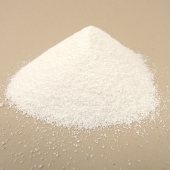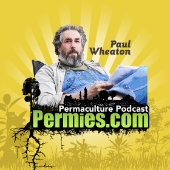

 14
14




How Permies works: https://permies.com/wiki/34193/permies-works-links-threads
My projects on Skye: The tree field, Growing and landracing, perennial polycultures, "Don't dream it - be it! "
 20
20




 14
14




Invasive plants are Earth's way of insisting we notice her medicines. Stephen Herrod Buhner
Everyone learns what works by learning what doesn't work. Stephen Herrod Buhner












 10
10




How Permies works: https://permies.com/wiki/34193/permies-works-links-threads
My projects on Skye: The tree field, Growing and landracing, perennial polycultures, "Don't dream it - be it! "
 7
7




Invasive plants are Earth's way of insisting we notice her medicines. Stephen Herrod Buhner
Everyone learns what works by learning what doesn't work. Stephen Herrod Buhner












 5
5




Anne Miller wrote:Maybe this is something to consider selling in your shop?
I cook without baking powder and with baking soda instead because baking powders dies before I can use it.
How Permies works: https://permies.com/wiki/34193/permies-works-links-threads
My projects on Skye: The tree field, Growing and landracing, perennial polycultures, "Don't dream it - be it! "
 23
23




-Nathanael
 9
9




Nathanael Szobody wrote:Here in Africa it is a staple seasoning in stews. It softens the greens and blends flavor.
Invasive plants are Earth's way of insisting we notice her medicines. Stephen Herrod Buhner
Everyone learns what works by learning what doesn't work. Stephen Herrod Buhner
 9
9




Nathanael Szobody wrote:
Here in Africa it is a staple seasoning in stews. It softens the greens and blends flavor. Obviously it cuts acidity too. I use it as the main ingredient in my rehydration formula. I made liquid soap with it during the COVID lock-down. Also I use it to emulsify oils in lotion.

 5
5




Nancy Reading wrote:I wonder why it is called bicarbonate of soda, when there is only one carbonate to sodium? ( NaHCO3 )
https://en.wikipedia.org/wiki/Bicarbonate wrote:The term "bicarbonate" was coined in 1814 by the English chemist William Hyde Wollaston. The name lives on as a trivial name.
https://en.wikipedia.org/wiki/Trivial_name wrote:Generally, trivial names are not useful in describing the essential properties of the thing named, such as the molecular structure of a chemical compound. And, in some cases, trivial names can be ambiguous or carry different meanings in different industries or different geographic regions (for example, a trivial name such as white metal can mean various things). A limited number of trivial chemical names are retained names, an accepted part of the nomenclature.
 17
17




-Nathanael












 9
9




Nathanael Szobody wrote:you always have the option of throwing in sea salt as well.
How Permies works: https://permies.com/wiki/34193/permies-works-links-threads
My projects on Skye: The tree field, Growing and landracing, perennial polycultures, "Don't dream it - be it! "
 9
9




Anne Miller wrote:
Nathanael Szobody wrote:Here in Africa it is a staple seasoning in stews. It softens the greens and blends flavor.
Baking soda is my secret ingredient when making pinto beans and in the flour mix for chicken fried steak.
I recommend Leigh's book:
https://permies.com/wiki/168291/Bake-Baking-Powder-Leigh-Tate
-Nathanael












 9
9




Nancy Reading wrote:Living by the coast I could use sea water as the liquour.....
🌿 Seaweed Ash for Lye Production
Seaweed ash is one of the most potent natural sources of alkali, historically used in soap and glass making.
🔬 Why Seaweed Ash Works Well:
[*] Seaweed (especially kelp and brown algae) is very high in potassium salts, particularly potassium carbonate (K₂CO₃).
[*] When burned, these salts remain in the ash and dissolve in water to form a strong alkaline solution.
[*] Seaweed ash was once a commercial source of soda ash and potash.
🧼 Historical Uses:
[*] Soap making: Used in coastal communities.
[*] Glass making: Provided alkali to lower silica’s melting point.
[*] Fertilizer: Rich in potassium and trace minerals.
📊 Comparison Table:
Ash Source Potassium Content Lye Strength Notes Hardwood High Strong Traditional source Crop residue Low–Moderate Weak Inconsistent Comfrey Moderate–High Moderate Dynamic accumulator Seaweed Very High Very Strong Excellent for lye
⚠️ Caution:
Seaweed ash may contain sodium salts and trace heavy metals, depending on the water it grew in. Always test the pH and alkalinity before using it in soap or food-related applications.
 12
12




Nathanael Szobody wrote:I should add that the tastier lyes come from palm tree trunks. In Africa they burn doum palm, and in the Philippines i had salt from coconut palm ashes. In the second case they mixed the lye water with sea water to get salt and all those amazing minerals in the final product.
So if you're looking for a high food grade lye, consider which of your local trees are highest in minerals like potassium and sodium (ai chatbots can quickly write you up a comparison) but you always have the option of throwing in sea salt as well.
Otherwise, any food crop residue is a good source for cooking lye. Here people use sorghum stalks and sesame seed stems...
 12
12




 10
10




M Ljin wrote:
Oh, of course… coltsfoot or butterbur ash is very traditional as a salt substitute. They taste good on their own, unburnt, too. I have some dried coltsfoot leaves stashed away, so will have to try!
-Nathanael












 15
15




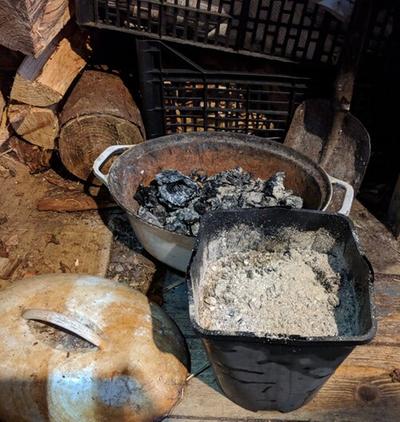
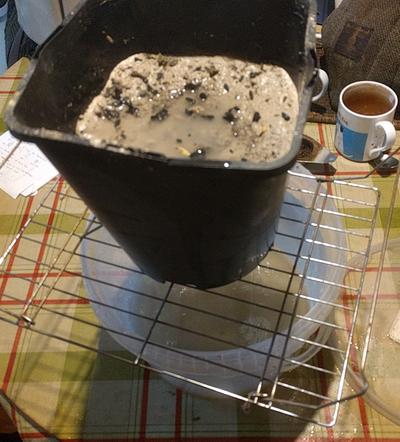
How Permies works: https://permies.com/wiki/34193/permies-works-links-threads
My projects on Skye: The tree field, Growing and landracing, perennial polycultures, "Don't dream it - be it! "

 14
14




 10
10




-Nathanael
 12
12




Best luck: satisfaction
Greatest curse, greed












 14
14




Thekla McDaniels wrote:I hope the pretzels came out, Nancy😊
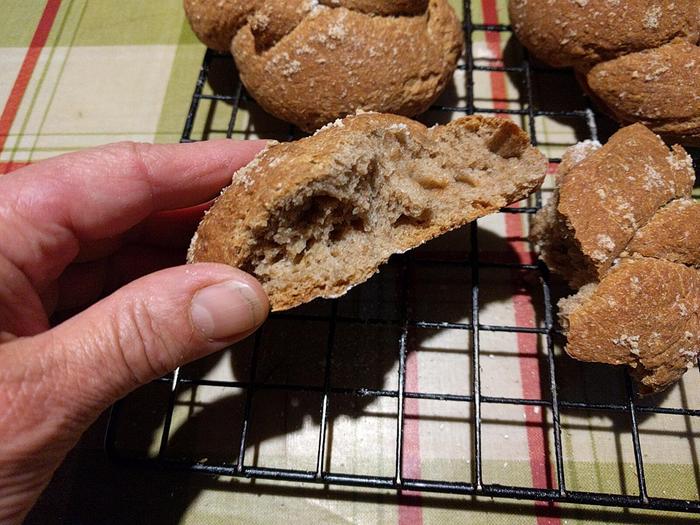
How Permies works: https://permies.com/wiki/34193/permies-works-links-threads
My projects on Skye: The tree field, Growing and landracing, perennial polycultures, "Don't dream it - be it! "
 5
5




Best luck: satisfaction
Greatest curse, greed












 6
6




Lye pretzels, also known as German lye pretzels, are traditional soft pretzels that are dipped in a lye solution before baking, giving them a distinctive chewy texture, deep brown color, and glossy finish. The lye bath enhances the flavor and appearance of the pretzels, making them a beloved snack in Germany and beyond.












 7
7




How Permies works: https://permies.com/wiki/34193/permies-works-links-threads
My projects on Skye: The tree field, Growing and landracing, perennial polycultures, "Don't dream it - be it! "
 8
8




 7
7




R Willow wrote:M Ljin,
Please either send me to the thread or let me know here how and why you use lye in acorn processing!
 7
7




With blessings, always
 4
4
















 3
3




Jennifer Kleffner wrote:1000 pounds of wood leaves about 5 pounds of ash, from which about 1 pound of potash (potassium carbonate) can be extracted.
 2
2




Jennifer Kleffner wrote:Long time soap maker here. This is a cut and paste from Dr. Dunn, who wrote the Scientific Soapmaking book (he's a chemistry professor who uses soap making to teach his students chemistry). Highly recommend his books. Short answer, no.
What was the question?
Kevin Dunn I'll weigh in on two points here. As many have pointed out, natural does not mean good or safe. We have been hurt and killed by nature since the dawn of time. Tornados, rattlesnakes, gizzly bears, and hemlock are all natural. The dictionary defines "natural" with several meanings, but none of them equal "good" or "safe." Can you find sodium hydroxide lying around without any human intervention in making it? No. The closest you can come is "trona," the mineral from which baking soda and washing soda are made (by humans). There is no official governmentally sanctioned definition of "natural" as used in commerce. Therefore, anyone can legally claim that any product is natural. The word just doesn't mean what people want it to mean.
Kevin Dunn The second point is that the active ingredient in wood ashes is potassium carbonate. If you burn sea plants, you get sodium carbonate. Yes, you can make soap with either of these, but for a hard bar soap, you want sodium hydroxide. The traditional way to get the hydroxide is to react wood ashes with lime (calcium hydroxide). My book, Caveman Chemistry documents the history of the alkali industry, and has several projects on making alkali from ashes and lime. Reacting wood ash with calcium hydroxide produces potassium hydroxide. To get sodium soap from potassium hydroxide, you add salt once the cook is done. Sodium soaps are less soluble than potassium soaps, so they float to the top, where you can skim them off. Making soap from wood ashes is a challenging, but rewarding project. It is part of the "Level 3 (master)" certification for the HSCG.
Kevin Dunn 1000 pounds of wood leaves about 5 pounds of ash, from which about 1 pound of potash (potassium carbonate) can be extracted.
Best luck: satisfaction
Greatest curse, greed
 7
7





|
If you settle for what they are giving you, you deserve what you get. Fight for this tiny ad!
The new purple deck of permaculture playing cards
https://www.kickstarter.com/projects/paulwheaton/garden-cards
|
